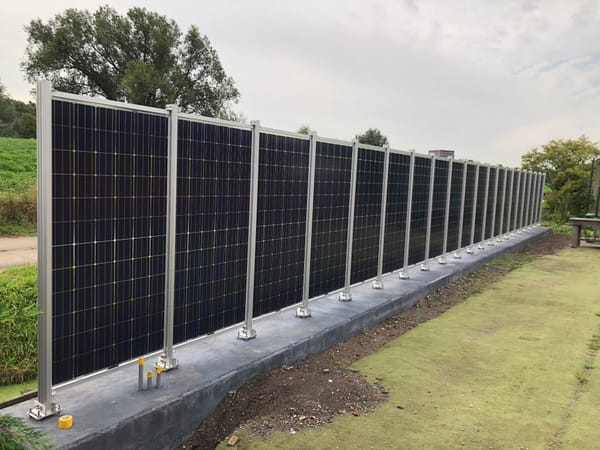The future of climate negotiations is climate finance

Last week I spoke with Dr. Carola Klöck, an assistant professor of political science at SciencesPo Paris, who researches international climate negotiations and last year edited, “Coalitions in the Climate Change Negotiations”, a collection of scholarly essays on past climate negotiation tactics. Other than actual negotiators, she’s probably one of the world’s foremost thinkers on the COP meeting process and in this out-take from our discussion, she has some interesting insight into why the process works the way it does.
We’re heading into a set of climate meetings that are basically about climate finance.
Right.
But climate finance is basically an imbalance of power. You have the biggest emitters, and everyone else.
The overall negotiations have moved into implementation. Since the Paris Agreement we don’t expect another global agreement so it’s a different type of negotiation. And most implementation happens domestically. You can’t really have an influence on the domestic regulation of the United States, or France, or wherever.
That’s why climate finance has become so central…Now, I think it’s even more prominent because we don’t have that much agreement making any more in the negotiations. For the global South, climate change is an additional development burden they have not created, so it’s fair they would get support from the emitters.
The imbalance of power has been around forever. It’s a general problem with negotiations.
Imagine I’m from Congo, and I need money to maintain my forests. One way or another it’s going to come from the United States, Europe, or Japan. How do these countries that have little leverage approach these meetings in order to try and get something? And how do they set expectations?
I think there’s two approaches, and they go hand-in-hand. One is through groups, say through the African group of countries or through the Rainforest Coalition. You can try to influence the discussion, for instance on the New Quantified Collective Goal on Climate Finance; you can push that as high as possible, to get the maximum global amount. The other approach, not to be forgotten, at these COPs there’s lots of bilateral meetings. So you go and try to attract funding. You go and see the World Bank, the Asian Development Bank, the French development agency, USAID, because everyone is present at these COPs. You don’t hear about these meetings because they’re on the sides, but those are important too.
What are some examples of COP outcomes that occurred because developing countries banded together?
The Loss and Damage Fund is a case in point. AOSIS [Alliance of Small Island States] has been pushing for this for thirty-plus years, since the very start…In Glasgow [COP26] they really wanted to push for a separate loss and damage fund, because adaptation and mitigation is funded but it doesn’t include a separate loss and damage fund. Now they’ve managed to get a decision on this. In Glasgow they got a decision to have a dialogue, in Sharm-el-Sheik [COP27] they got a decision to have a separate fund and now it was operationalized in Dubai. This was a very case of a developing country success.
As we’re spending more and more time talking about climate finance, what’s the difference between a COP meeting and a World Bank annual meeting?
[The World Bank meeting] is much more about finance, but it’s a different structure. The COPs are regarded as de facto equality. It’s a negotiation setting between almost 200 formally equal partners. The developing countries actually have a majority. Whereas the World Bank pushes the donor agenda. At the COPs, clearly there are inequalities, but the COPs are more equal than in a World Bank setting.
It’s consensus decision making and every country formally counts the same.
One of the major sticking points has been this straddling status that China has, where it calls itself a developing nation, but clearly it’s not in a lot of ways. How do you envision something like that getting resolved?
I think that’s a mistake the negotiators made in 1997 with the Kyoto Protocol. Because with the Kyoto Protocol we had Annex I countries and non-Annex I countries and there was no definition of a threshold you needed to cross to become an Annex I country. It’s just a status list of countries.
Actually Kazakhstan wanted to become an Annex I country and take on legally binding emissions targets under the Kyoto Protocol and this was blocked by China and others, because of course they didn’t want to touch that list. It’s the Holy Grail. If you change it once, wouldn’t you be able to change it again and perhaps put China on that list? So, that’s a big mistake they’ve made that still has implications today.
The Paris Agreement has slightly different rules in that all countries are treated equally and have to submit NDCs [Nationally Determined Contributions]. Still because, it’s under the United Nations Framework Convention and the Kyoto Protocol is part of the foundation for that entire process, the divide into the two Annexes still have implications for ongoing discussions.
This is why China can claim to be a developing country when it’s non-Annex I and also why Saudi Arabia claims to be a developing country. This is also part of the discussion for the Loss and Damage Fund, who is going to pay in and who is going to get paid out of this fund. Clearly there’s no justification why Bahrain or Saudi Arabia should not get money out of it, when they are big emitters and certainly not poor.
Like what you see here? Please forward to a colleague.
Ideas
Last week, ministers of members countries of the International Energy Administration issued a communique formally expanding the IEA’s mandate to include not only measurement of carbon emissions but also analysis of how those emissions might be reduced. One of the IEA’s biggest information consumers, fossil fuel producers, don’t like this since it puts their work in a bad light. So, they’re campaigning for IEA to scale back and dump the climate stuff. This will ultimately become a political battle with an uncertain outcome.
Hailed at COP26 as a solution to greening developing countries, Joint Energy Transition Partnerships (JETPs) have stalled. A Rockefeller Foundation-sponsored study suggests a number of fixes such as including multi-development banks in finance planning, creating individual projects that can be syndicated, and expanding the number of donor countries (which seems to be code for “Gulf countries”). Meanwhile, the first JETP, South Africa, is endangered by local politicos that want to rely on cheap coal.
Thirty years ago China became the must-use manufacturer because it had the cheapest labor pool. Now, because it has the deepest knowledge base, it has become the must-use manufacturer for clean energy tech. A Wood-Mackenzie study finds China controls an average of 78% of manufacturing capacities across 14 vital value chain segments and that without China, the world would need an additional US$6 trillion in power and renewables investment just to catch up. This report is full of many smaller clean-tech manufacturing insights.
Two former U.S. foreign affairs officials, one Bush-era and one from the Obama Administration, write that geopolitics isn’t considered enough in climate policy making. “There were still relatively few foreign policy professionals in Dubai in December 2023, and even fewer climate leaders can be found at the most significant national security and foreign policy gatherings.”
Reporting of Note
Feb. 19
The Boom in Battery Metals for EVs Is Turning to Bust [Wall Street Journal]
Feb. 18
Saturation point: Australia’s best known carbon-neutral farm can no longer offset its emissions [Guardian]
Feb. 16
EU puts water resilience plan on hold as drought grips Spain, Italy [Politico]
Feb. 15
Switzerland proposes first UN expert group on solar geoengineering [Climate Home News]
Feb. 14
Global warming, deforestation, fires combined could hasten Amazon demise, study finds [Reuters]





